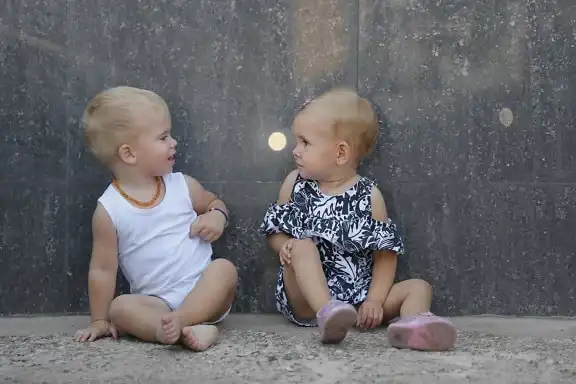This week, it came to light that the government's Safe to Sleep public health campaign has been discontinued. Launched in 1994, the scheme aimed to raise awareness about how to prevent sleep-related infant deaths - a leading cause of mortality among young children in the U.S.
In the years following the campaign's launch, there was a substantial decline in infant death rates. However, recent years have seen an unfortunate increase in this number. The reasons for this are varied and complex, but a lack of awareness about safe sleep practices among new parents plays a role.
In particular, confusion reigns among many Gen Z parents. A recent survey of over 800 mothers revealed that many are unsure about the safest way to put their babies to sleep. This article aims to dispel some of this confusion by offering expert advice on this topic.

As a result of the survey findings, the government's decision to end the Safe to Sleep public health campaign has raised concerns. This information comes on the heels of the revelation that roughly 30% of Gen Z mothers are uncertain about the safest sleeping positions for their babies. With this in mind, the discontinuation of the campaign raises questions about the future of safe sleep education.
Guidelines from the American Academy of Pediatrics (AAP) recommend that babies should be put to sleep on their backs for all naps and overnight sleep. This is because it has been found to reduce the risk of sudden and unexpected infant death syndrome (SUID). Despite these recommendations, only 71% of Gen Z parents are aware of this practice
The survey states that the figure drops even further when it comes to knowledge about safe baby clothing. Only 43% of Gen Z parents know that snug-fitting pajamas increase safety. Dr. Micah Resnick, a pediatrician based in Cincinnati, Ohio, emphasizes the importance of a proper fit when it comes to baby sleepwear. According to him, excessively loose pajamas can potentially cover a baby's face and become a suffocation hazard.
In order to ensure that your little one is dressed appropriately for bed, make sure that the sleepwear fits close to the body without being restrictive. The neck and arm openings should be snug, but not tight enough to leave red marks or restrict movement.
If a waistband is present, it should sit securely without digging into the baby's stomach. Furthermore, the length of pajamas or sleep sacks should be such that they allow the baby to straighten their legs, but not long enough to cover the face.
Another area of concern when it comes to safe sleep practices is the use of hand-me-down cribs. While these can seem like a cost-effective option, they come with their own set of risks, mainly due to outdated safety standards and general wear and tear.
Dr. Resnick advises caution when opting for second-hand cribs. Ideally, the crib should be manufactured after 2011, when the Consumer Product Safety Commission (CPSC) issued new safety standards. These included prohibitions against drop-side cribs and stricter requirements for mattress support, hardware durability, and safety testing.
The credibility of the crib should also be verified by checking for any recalls on the CPSC website. Ensure that the crib has all of its original parts in good working condition, and that you have a copy of the assembly instructions.
In addition, the condition of the crib matters a lot. Loose joints, cracks, splinters, or sharp edges could potentially harm your baby. Instead of trying to repair such cribs, opt for a different one. Lastly, consider investing in a new mattress as old ones can harbor bacteria, mold, and allergens.
Despite the fact that information regarding safe sleep practices is out there, many parents are still unaware of basic guidelines. It's crucial, especially in the light of the cancellation of the Safe to Sleep campaign, to disseminate this knowledge to ensure every baby is safe at bedtime.
Whether you're a new parent, or know someone who is, make it your mission to spread the word about these best practices. As Dr. Gina Posner, a pediatrician based in Fountain Valley, California, eloquently states, 'Safe sleep has reduced the number of infant sleep deaths. It's proven to work, so it's important to keep talking about it even if the government is not.'
Going forward, it's clear that the responsibility to keep this conversation alive falls on us as individuals. The more we can educate ourselves and others about safe sleep practices, the closer we can get to protecting our little ones and ensuring they grow up safe and healthy.
In conclusion, it's not enough to simply understand these practices - we must also take an active role in educating others. In doing so, we can continue the work that programs like Safe to Sleep started and ensure that future generations of children are protected.
To take this a step further, consider speaking to local school boards and parent groups about the importance of sleep safety. You may also want to take online classes, read up about the subject, or consult with medical professionals. As we've seen time and again, education can make all the difference when it comes to safety and well-being.
The time to promote safe sleep practices is now. Let's turn this knowledge into action and help create a safer world for our children. Remember, it's not about pointing fingers or laying blame - it's about making sure our children have the best possible start in life. And that, surely, is worth fighting for.